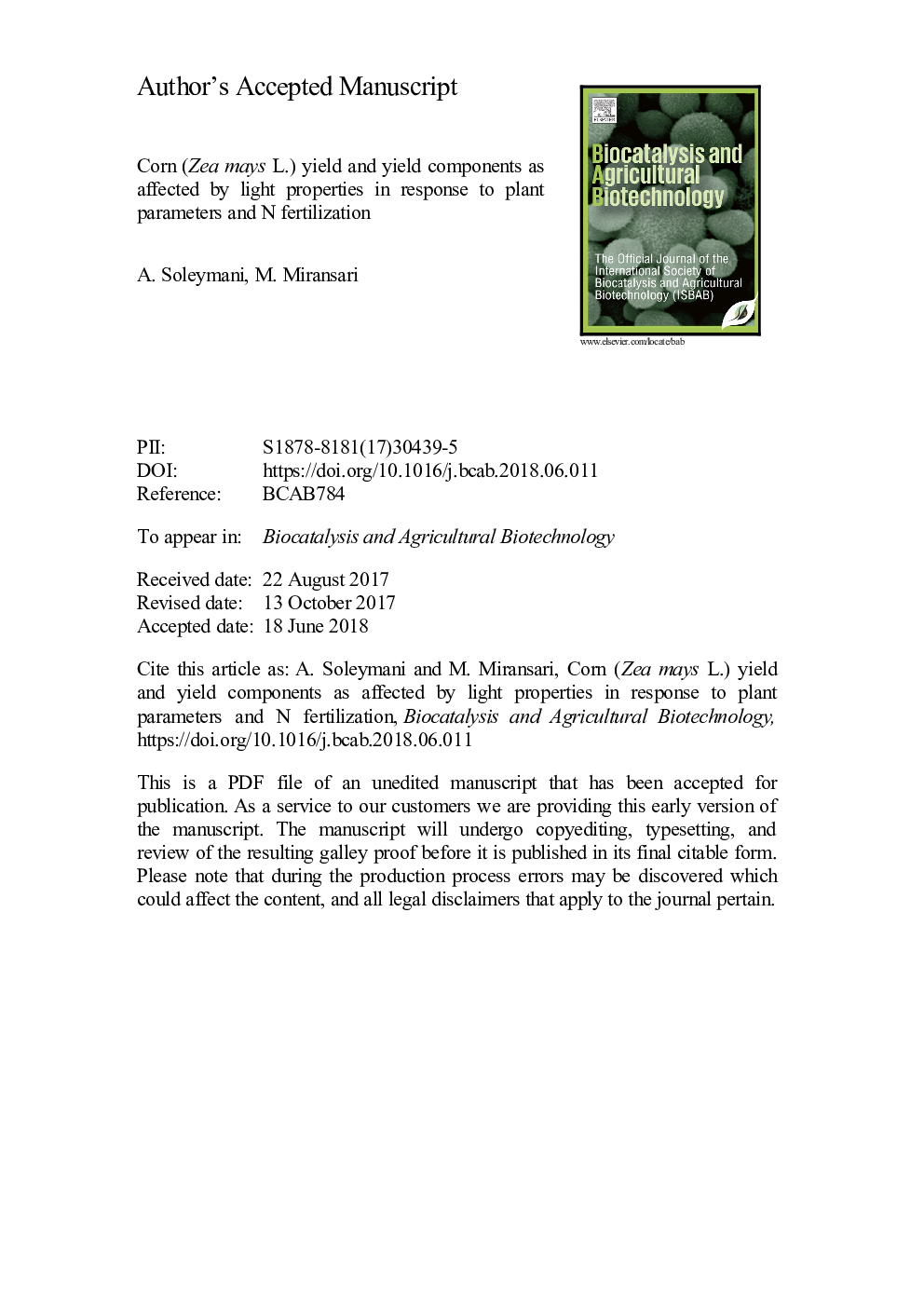| Article ID | Journal | Published Year | Pages | File Type |
|---|---|---|---|---|
| 8405619 | Biocatalysis and Agricultural Biotechnology | 2018 | 32 Pages |
Abstract
Light absorption and light extinction can importantly affect crop growth and yield production. Accordingly, two field (split plot) experiments were conducted to investigate: 1) the most optimum plant spacing (S) and density (D), which result in the highest rate of corn yield and yield components as affected by light absorption (L) and extinction (K), 2) the most efficient corn genotype (G) and the most optimum N fertilization rate (N), which effectively increase corn yield and yield components by affecting corn light properties. D and N were devoted to the main plots and S and G were used as the sub treatments. Light absorption was measured using a light meter and the coefficients of light extinction (K) were calculated. D, N and G as well as their interactions were the most effective factors on corn light properties, growth and yield. The crop density of 10-12 significantly affected corn growth and yield production. D12 resulted in the highest LAI (4.40), L (16.00%), and biological yields (20,623.8â¯kg/ha). However, the highest K (0.79), grain yield (2398.8â¯kg/ha), and harvest index (14.36) were related to D6. Although plant height increased up to S60 (234.8â¯cm) (Pâ¯=â¯0.05), the highest and significantly different LAI was resulted by S50 (4.20). S60 also resulted in the highest L (20.91%). Increasing S also increased K according to the following: S50 (0.69), S60 (0.80), and S75 (0.93). Elevating N significantly increased (Pâ¯=â¯0.05) cob length and LAI at N100 (15.39â¯cm, 6.574) and N150 (15.72â¯cm, 6.512). The highest L, (28.58%, Pâ¯=â¯0.1), K (0.51), biological (16,230.1) and grain (3623â¯kg/ha) yields as well as harvest index (22.33) were resulted by N100. Genotype SC704 resulted in the highest LAI (6.381), L (22.80%), K (0.49), and grain yield (3501â¯kg/ha). Although with increasing D, corn leaf area index (LAI) and L increased, K decreased, which may be used as an indicator of light efficiency utilized by crop. Such results indicate that measurement of K is also essential for the proper determination of corn plant response to light. The most optimum N treatment was 100â¯kg/ha and the most efficient G was SC704. D, N and G are among the most important factors affecting corn light properties, growth and yield, compared with S. It is strongly suggested that such experiments be conducted under different climatic conditions to indicate the significance of the experimental treatments on corn light properties, growth and yield. The results of these experiments can be used for the proper designing of corn plantation resulting in the highest rate of efficiency with respect to the available resources and the present climatic conditions.
Related Topics
Life Sciences
Agricultural and Biological Sciences
Agricultural and Biological Sciences (General)
Authors
Ali Soleymani,
